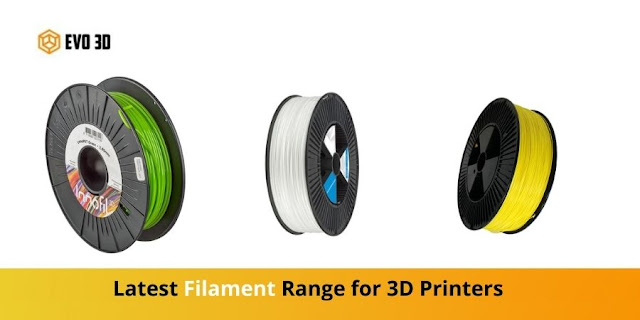Professional 3D Scanners' Vital Role in Reverse Engineering
Reverse Engineering, alternatively called by the name back engineering, is the process of developing a project of products or parts in the absence of any kind of drawings or documentation. Furthermore, by developing a digital (Computer-aided design) CAD model with the help of 3D scanning (enabled by professional 3D scanners). These parts can be redone and recast at the same time all to increase their lifetime. And add new functionalities to them. What’s more, this procedure which is precisely called by the name: 3D scanning for reverse engineering finds its use in several industries. Namely the manufacturing of spacecraft and military equipment.
Bound to Gain Attention
Furthermore, as 3D printing gains feet on a global level, reverse engineering will also gain attention. All thanks to the fact that the cloning of an object or design with the help of digital modelling and 3D printing (enabled by high-temperature 3D printers) is more convenient for the general public as compared to other production processes. Evo3D is a British firm with its HQ in the United Kingdom that deals in professional 3D scanners and high-temperature 3D printers of varying configurations.
Steps Involved in Reverse Engineering
Talking about the steps that constitute a reverse engineering process. They are as follows:
● Firstly, get your hands on an adequately accurate digital impression of the part that you need to reverse engineer.
● Secondly, convert this resulting image into a solid 3D model with the help of specialised software.
● Followed by the task of digital processing of the model to get rid of any artefacts and convert the format. After that introduce the necessary changes so that the model design is ready for the final product launch.
Also, it is necessary to get your hands on the right type of professional 3D scanner to obtain the primary data that best suits the existing task. Take, for example, it is worthless to scan a jewellery piece with the help of a time-of-flight scanner for large objects, and vice versa. Besides, the very high accuracy of a handheld or desktop scanner is of no use when 3D scanning big-size objects like a sea vessel. To get help in situations like these, you can approach Evo3D engineers. As the latter can recommend professional 3D scanners along with compatible high temperature 3D printers. Whenever you find yourself stuck in a reverse engineering job.
How To Pick a Professional 3D Scanner for Reverse Engineering
To begin with, it is of utmost importance to get the correct information regarding the dimensions of the subject objects. As this information has a direct effect on the scanning technology that will be put to use during the job. Along with the scanner variety (handheld, desktop, or floor-standing):
● Firstly, for objects that are more than 10m in any of the coordinate axes, 3D scanners with the structured light or usual laser triangulation technologies are not right. Scanning these objects even with the help of a handheld scanner will waste a lot of time. Also, the accuracy of the data received is less. You can solve this problem partially with the help of photogrammetry. Hence, for such large objects namely aeroplanes, ships and buildings. It will be a better choice if you go for time-of-flight (ToF) scanners.
● Secondly, for objects that are more than 50 cm in size, but less than 3 m. You should use handheld scanners — laser or optical ones.
● Thirdly, for objects from 10 to 50 cm, immobile desktop or mobile floor-standing professional 3D scanners (both optical and laser) will do justice to the job.
● High-precision desktop optical scanners are the best match for smaller objects. They are of two types: dental and versatile.
Dental Professional 3D Scanners
They comprise very high resolution, high precision, and rotary tables with the ability to fasten an occluder and impression stands.
Versatile Professional 3D Scanners
These scanners come with a multi-axis rotary table, or the scanner itself is knotted on axes with some degree of freedom. This design of versatile scanners permits sovereign scanning of most of the object's surface. Additionally, these scanners offer a nice scanning depth intending to allow its users to correctly capture grooves.
For objects with a size range of 10-50cm, laser handheld scanners are perfect, provided one of the following conditions is met:
● 3D scanning work is a regular task.
● You cannot move to the workshop the object that you need to scan.
● You are short of space for placing a still scanner.
● The object's surface is difficult to scan with optics, like either it is black or highly reflective.
After describing the size of scanned objects, it is crucial to determine the needed scanning accuracy along with measurement tolerance. And decide whether there will be a need for a metrological scanner.
Conclusion
To sum it up, there is a lot of manual effort that goes into 3D scanning for reverse engineering jobs. Which can only be brought down with an ever-increasing level of process automation. Furthermore, firms like Evo3D which deal in different kinds of 3D hardware are increasingly using the power of in-trend technologies to introduce more and more automation in the 3D hardware. This approach is of great help to specialists hailing from a variety of fields, beginning from doctors scanning body parts to workers on construction sites. Last but not the least, if 3D scanners keep on penetrating the consumer market at this rate. They may one day become affordable like smartphones.





Comments
Post a Comment